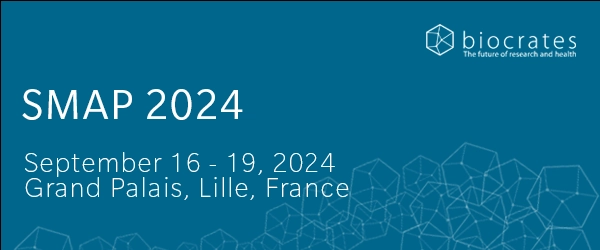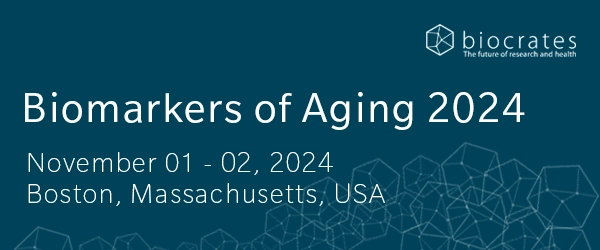Could metabolomics provide stratification biomarkers for COVID-19 and other infectious diseases?
Infectious diseases are typically diagnosed by the direct or indirect detection of the etiologic pathogens causing them. Access to rapid diagnostic testing is certainly crucial to controlling the spread of the virus, but understanding the mechanism and the treatment of such disease is the ultimate aim to defeat the threat it poses to our society.
While the novel coronavirus (SARS-CoV-2) was only recently discovered, the disease caused by the virus, COVID-19, has quickly evolved into what is likely the greatest health crisis of the century. The current diagnostic tests of COVID-19 mainly rely on PCR technology to identify the presence or the absence of the virus. Despite recent technological advances that enable a higher rate of diagnostic testing, our limited understanding of the disease pathophysiology hampers our ability to effectively treat COVID-19 patients. This emphasizes the pressing need for the identification of specific biomarkers along the disease course that can improve treatment strategies or stratification of patients with differing clinical needs.
Key areas of medical needs that come to mind are:
Early differentiation between the large subset (95 %) of patients with mild or moderate disease, and the subset (5 %) who will develop severe or critical disease.
Guidance in treatment decisions, as soon as multiple treatment modalities, with different modes of action and different safety profiles, become available.
Metabolomics is highly informative in clinical research, as it offers a snapshot of the physiological processes that are altered in response to a disease or therapeutic regimen. The initial goal for Metabolomics-based COVID-19 research should be to identify biomarker signatures that facilitate stratification (i.e. prognostic markers), or that enable clinicians to predict or assess therapeutic response. In this article, we highlight the theoretical foundations that assert the relevance of metabolomics in the search for prognostic biomarkers that predict COVID-19 outcome parameters.
Hypotheses derived from the literature
Apart from our understanding that the virus enters the cell through Angiotensin-Converting Enzyme 2 (ACE 2), the biology of the virus remains largely unknown. Still, the implicated involvement of steroid hormone metabolism provides the first important link between SARS-CoV-2 and cellular metabolism.
Many of the risk factors and underlying conditions associated with a severe disease course of COVID-19 have been identified. Fortunately, outside the context of SARS-CoV-2 infection, there exists a wealth of information about those underlying conditions from immunology, infectiology, basic immunometabolism, and clinical research studies. Importantly, these previously established insights allow us to draw additional links between metabolism and COVID-19. Herein, we summarize our evidence-based hypotheses for the contributions that metabolomics can lend to various fields of ongoing COVID-19 research.
Metabolomics Advances Basic Research on Immune Regulation
Science is beginning to understand how closely metabolism and immune regulation are interlinked. For example, mTOR (mammalian target of rapamycin) has been shown to act as a “master switch” of metabolism and the immune system. This discovery has facilitated significant growth in the field of immunometabolism research over the last decade.
Researchers have also suggested a role for the bile acid receptor FXR in local immune regulation in the lungs (Zhang et al., 2012), and from metabolomics studies, Lercher et al., discovered changes in the hepatic urea cycle in response to viral infections.

Hypothesis 1
Metabolites known to modulate the immune system, such as amino acids, steroid hormones and bile acids are potential stratification biomarkers in infectious diseases.
In addition, Koeberlin et al. have shown that membrane lipid composition affects TLR-associated IL-6 signaling. As high levels of IL-6 have been found in COVID-19 patients with severe disease, we can further hypothesize the following:

Hypothesis 2
Aging-related changes in membrane lipid composition may contribute to the vulnerability of elderly and patients with pre-existing conditions, due to alterations in IL-6 signaling.
Metabolomics Facilitates Stratification in Infectious Diseases
While diagnostic tools are usually available for infectious diseases, often, biomarkers that predict the disease course remain uncharacterized, including in COVID-19. As severe infections are a systemic event affecting the organism beyond the directly involved organ, they are difficult to treat. One promising contribution of metabolomics to treatment strategies is the ability to parse out the affected physiological processes with specific biomarkers.
A comprehensive review on biomarker research in infectious diseases is well beyond the scope of this article. However, prior work has demonstrated the role of various metabolites in infectious diseases, as illustrated in the following examples:
- Sphingolipids have been associated with adverse outcomes in lower respiratory tract infections (Baumgartner et al., 2018).
- Tryptophan metabolites and the nitric oxide pathway have been shown to be predictive of severity and outcome in pneumonia (Meier et al., 2017; Voegeli et al., 2017) .
- Tryptophan metabolites (Ferrario et al., 2016) and microbiota-associated secondary bile acids (Recknagel et al., 2012) have been described as predictive markers for sepsis mortality.
- A bile acid signature has been shown to predict elimination of C. difficile after fecal microbiota transplantation (Farowski et al., 2019).

Hypothesis 3
Biomarkers previously identified to be predictive for the outcome of infectious conditions might also predict outcomes in COVID-19, such as pneumonia and sepsis. Bile acid and tryptophan metabolism seem to be especially important, although the complexity of immune regulation will probably lead to a complex biomarker signature providing the best performance.
Metabolomics in Critical Care
Beyond the applications in infectious diseases, metabolomics has been shown to enable stratification in challenging settings as described by:
- Severe inflammatory response syndrome with infectious vs. non-infectious origins are accompanied by distinct biomarker signatures that enable differentiation between the two (Schmerler et al., 2012).
- Acylcarnitines, which are markers of mitochondrial fatty acid metabolism, are associated with survival in out-of-hospital cardiac arrest (Widmer et al., 2020)
- Tryptophan metabolism is involved in recovery from stroke via immune regulation and microbiota-related effects (Benakis et al., 2018).
The ideal scenario would be to find an early stratification biomarker that overcomes the challenges of co-medication and co-morbidities to help with the treatment of COVID-19.

Hypothesis 4
Critical disease is associated with massive changes in metabolic control, making metabolomics a suitable tool for biomarker research in every stage of infectious diseases, including the critical care setting.
Metabolomics Monitors Risk Factors Associated with COVID-19
Although every demographic group can contract SARS-CoV-2 and develop severe disease, it is apparent that those with advanced age and pre-existing conditions are at greater risk. Pre-existing conditions such as severe liver and kidney disease have been well characterized by metabolomics research (Kim et al., 2018; Wiesenhofer et al., 2018).
Metabolic signatures are known to predict heart-related outcomes such as myocardial infarction (Ward-Caviness et al., 2017). Furthermore, metabolic biomarkers have shown added value in predicting re-hospitalization and mortality in heart failure (Cheng et al., 2015).

Hypothesis 5
Biomarker signatures for outcome in pre-existing conditions such as heart failure might predict vulnerability in COVID-19 infections.
Summary
Collectively, the evidence presented here provides a compelling argument for the role of metabolomics within infectious disease studies. Furthermore, the demonstrated relevance of biomarkers that inform on risk factors linked to COVID-19 severity suggests that metabolomics could facilitate personalized COVID-19 treatment regimens, from early patient stratification to appropriate drug delivery and dosage to patients.
References
Baumgartner T, Zurauskaite G, Steuer C, Bernasconi L, Huber A, Mueller B et al. (2019): Association of serum sphingomyelin profile with clinical outcomes in patients with lower respiratory tract infections: results of an observational, prospective 6-year follow-up study. Clin Chem Lab Med; 57(5):679-89. DOI: 10.1515/cclm-2018-0509.
Benakis C, Sadler R, Singh V, Roth S, and Liesz A (2018): Tryptophan Metabolism Affects the Intestinal Immune Response After Stroke. Stroke 49(Suppl 1). DOI: 10.1161/str.49.suppl_1.TP259.
Cheng, Mei-Ling; Wang, Chao-Hung; Shiao, Ming-Shi; Liu, Min-Hui; Huang, Yu-Yen; Huang, Cheng-Yu et al. (2015): Metabolic disturbances identified in plasma are associated with outcomes in patients with heart failure: diagnostic and prognostic value of metabolomics. In: Journal of the American College of Cardiology 65 (15), S. 1509-1520. DOI: 10.1016/j.jacc.2015.02.018.
Farowski F, Solbach P, Tsakmaklis A, Brodesser S, Cruz Aguilar MR, Cornely OA et al. (2019): Potential biomarkers to predict outcome of faecal microbiota transfer for recurrent Clostridioides difficile infection. Digestive and Liver Disease; 51(7):944-51. DOI: 10.1016/j.dld.2019.01.012.
Ferrario M, Cambiaghi A, Brunelli L, Giordano S, Caironi P, Guatteri L et al. (2016): Mortality prediction in patients with severe septic shock: a pilot study using a target metabolomics approach. Sci Rep; 6:20391. DOI: 10.1038/srep20391.
Kim DJ, Yoon S, Ji SC, Yang J, Kim Y-K, Lee S et al. (2018): Ursodeoxycholic acid improves liver function via phenylalanine/tyrosine pathway and microbiome remodelling in patients with liver dysfunction. Sci Rep; 8(1):11874. DOI: 10.1038/s41598-018-30349-1.
Köberlin S, Snijder B, Heinz LX, Baumann CL, Fauster A, Vladimer GI et al. (2015): A Conserved Circular Network of Coregulated Lipids Modulates Innate Immune Responses. Cell, Volume 162 (1), 170-183. DOI: 10.1016/j.cell.2015.05.051.
Lercher A, Bhattacharya A, Popa AM, Caldera M, Schlapansky MF, Baazim H et al. (2019): Type I Interferon Signaling Disrupts the Hepatic Urea Cycle and Alters Systemic Metabolism to Suppress T Cell Function. Immunity; 51(6):1074-1087.e9. DOI: 10.1016/j.immuni.2019.10.014.
Meier MA, Ottiger M, Vogeli A, Steuer C, Bernasconi L, Thomann R et al. (2017): Activation of the tryptophan/serotonin pathway is associated with severity and predicts outcomes in pneumonia: results of a long-term cohort study. Clin Chem Lab Med; 55(7):1060–9. DOI: 10.1515/cclm-2016-0912.
Recknagel, Peter; Gonnert, Falk A.; Westermann, Martin; Lambeck, Sandro; Lupp, Amelie; Rudiger, Alain et al. (2012): Liver dysfunction and phosphatidylinositol-3-kinase signalling in early sepsis: experimental studies in rodent models of peritonitis. In: PLoS medicine 9 (11), e1001338. DOI: 10.1371/journal.pmed.1001338.
Schmerler D, Neugebauer S, Ludewig K, Bremer-Streck S, Brunkhorst FM, and Kihntopf M (2012): Targeted metabolomics for discrimination of systemic inflammatory disorders in critically ill patients. J Lipid Res.; 53(7): 1369-1375. DOI: 10.1194/jlr.P023309.
Vögeli A, Ottiger M, Meier MA, Steuer C, Bernasconi L, Kulkarni P et al. (2017): Admission levels of asymmetric and symmetric dimethylarginine predict long-term outcome in patients with community-acquired pneumonia. Respir Res; 18(1):25. DOI: 10.1186/s12931-017-0502-4.
Ward-Caviness CK, Xu T, Aspelund T, Thorand B, Montrone C, Meisinger C et al. (2017): Improvement of myocardial infarction risk prediction via inflammation-associated metabolite biomarkers. Heart; 103(16):1278–85. DOI: 10.1136/heartjnl-2016-310789
Widmer M, Thommen EB, Becker C, Beck K, Vincent AM, Perrig S et al. (2020): Association of acyl carnitines and mortality in out-of-hospital-cardiac-arrest patients: Results of a prospective observational study. Journal of Critical Care. DOI: 10.1016/j.jcrc.2020.03.009.
Wiesenhofer FM, Herzog R, Boehm M, Wagner A, Unterwurzacher M, Kasper DC et al. (2018): Targeted Metabolomic Profiling of Peritoneal Dialysis Effluents Shows Anti-oxidative Capacity of Alanyl-Glutamine. Front Physiol; 9:1961. DOI: 10.3389/fphys.2018.01961.
Zhang L, Li T, Yu D, Forman BM and Huang W. (2012): FXR Protects Lung from Lipopolysaccharide-Induced Acute Injury. Mol Endocrinol., 26(1): 27-36. DOI: 10.1210/me.2011-0042







